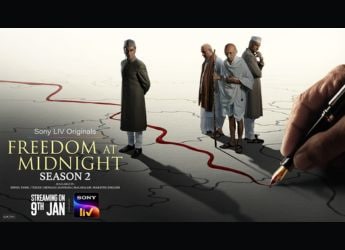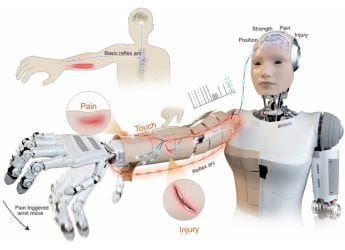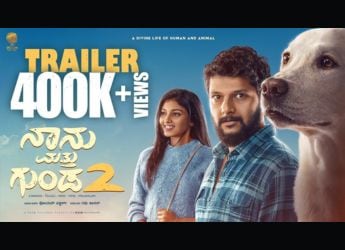- Home
- Science
- Science News
- NASA Shows Giant Debris Cloud Formed by Collision of Celestial Bodies
NASA Shows Giant Debris Cloud Formed by Collision of Celestial Bodies
When celestial objects smash together, they could either accumulate more material and increase their size or they can break apart into multiple smaller bodies.

Photo Credit: NASA/ JPL-Caltech
Scientists have found evidence of such collisions using NASA's now-retired Spitzer Space Telescope
NASA has shared an image of what astronomers say is the first observation of a giant debris cloud formed by a massive collision of celestial bodies. Astronomers observed the cloud as it passed in front of its star and briefly blocked its light. Astronomers have long found evidence of collision among celestial bodies. But those observations did not provide many details about the collisions, such as the size of the objects involved. This observation was fresh in that sense. The passing by of the debris cloud in front of a star allowed scientists to study it in detail.
They were able to determine the cloud's size shortly after impact, estimate the size of the objects that collided, and watch the speed with which the cloud dispersed.
Most rocky planets and satellites, including our Earth and the Moon, are formed or shaped by massive collisions among celestial bodies early in the solar system. When these objects smash together, they could either accumulate more material and increase their size or they can break apart into multiple smaller bodies.
Scientists have long found evidence of these types of collisions using NASA's now-retired Spitzer Space Telescope, but could not pull many details from those observations.
“All the cases reported previously from Spitzer have been unresolved, with only theoretical hypotheses about what the actual event and debris cloud might have looked like,” said George Rieke, a co-author of the new study published in the Astrophysical Journal.
In 2015, astronomers led by Kate Su of the University of Arizona started observing a 10 million-year-old star called HD 166191. NASA stated that the team conducted more than 100 observations of the system over the course of the next four years.
In 2018, the team saw the star system become brighter, which the agency said suggested an increase in its production of debris. Additionally, they found a debris cloud blocking the star. They found that the cloud was highly elongated, covering an area three times that of the star. To produce a cloud that big, the objects in the main collision must have been the size of dwarf planets.
By 2019, the cloud was no longer visible, but the system contained twice as much dust. This information can help scientists test theories about how terrestrial planets form and grow, the authors say.
Catch the latest from the Consumer Electronics Show on Gadgets 360, at our CES 2026 hub.
Related Stories
- Samsung Galaxy Unpacked 2025
- ChatGPT
- Redmi Note 14 Pro+
- iPhone 16
- Apple Vision Pro
- Oneplus 12
- OnePlus Nord CE 3 Lite 5G
- iPhone 13
- Xiaomi 14 Pro
- Oppo Find N3
- Tecno Spark Go (2023)
- Realme V30
- Best Phones Under 25000
- Samsung Galaxy S24 Series
- Cryptocurrency
- iQoo 12
- Samsung Galaxy S24 Ultra
- Giottus
- Samsung Galaxy Z Flip 5
- Apple 'Scary Fast'
- Housefull 5
- GoPro Hero 12 Black Review
- Invincible Season 2
- JioGlass
- HD Ready TV
- Laptop Under 50000
- Smartwatch Under 10000
- Latest Mobile Phones
- Compare Phones
- OPPO Reno 15 Pro Max
- Honor Win RT
- Honor Win
- Xiaomi 17 Ultra Leica Edition
- Xiaomi 17 Ultra
- Huawei Nova 15
- Huawei Nova 15 Pro
- Huawei Nova 15 Ultra
- Asus ProArt P16
- MacBook Pro 14-inch (M5, 2025)
- OPPO Pad Air 5
- Huawei MatePad 11.5 (2026)
- Xiaomi Watch 5
- Huawei Watch 10th Anniversary Edition
- Acerpure Nitro Z Series 100-inch QLED TV
- Samsung 43 Inch LED Ultra HD (4K) Smart TV (UA43UE81AFULXL)
- Asus ROG Ally
- Nintendo Switch Lite
- Haier 1.6 Ton 5 Star Inverter Split AC (HSU19G-MZAID5BN-INV)
- Haier 1.6 Ton 5 Star Inverter Split AC (HSU19G-MZAIM5BN-INV)

















